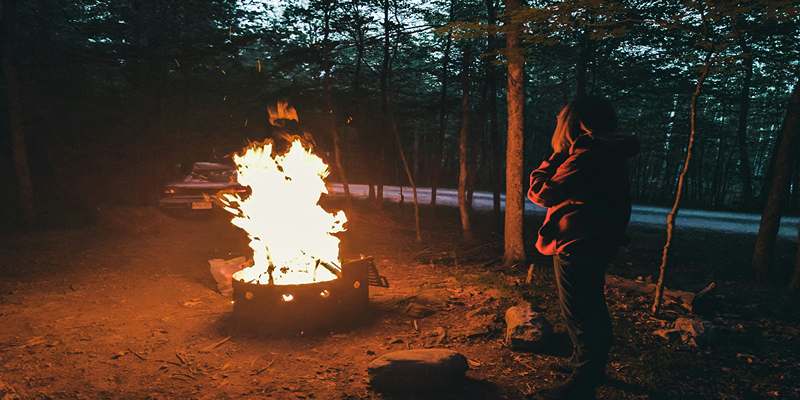Experience the Vibrant Sagada Bonfire Fest Tradition
The Sagada Bonfire Fest is one of the most awaited Mountain Province fiestas where people celebrate every year in the chilly town of Sagada, Philippines. Having its origin in tradition, this event provides an engagement platform for people from the locality and other parts of the country to enjoy a warm evening. This was primarily a New Year celebration that has grown into a magnificent dance, singing, and narrating event that includes different rituals. Being a part of the main context of the Sagada cultural celebration, the Bonfire Fest gives an insight into the contemporary Cordilleran people’s attitude towards their roots. It does not matter if you are a first-time visitor or have been to this area before; there is nothing as exciting as celebrating this festival within the Cordillera mountains.

The Essence of the Sagada Bonfire Fest
The Origins and Cultural Significance of the Festival
The Sagada Bonfire Fest traces its origins to the local tradition of celebrating significant occasions with fire. Fire, again, is represented as warmth, togetherness, and the indomitable spirit of the people from the Cordilleras. Traditionally, bonfires were common features of village assembly meetings during which elderly people would narrate stories, myths, or legends and even sing folk songs. It expanded to become an official celebration that not only the residents participate in but also tourists who wish to see the true indigenous culture of the Philippines, specifically Mountain Province. It is still an important day to this date, maintaining the tradition of the indigenous people with influences from the contemporary world.
How the Bonfire Fest Unites the Local Community
A unique feature of the Sagada Bonfire Fest is the unity that the event creates among the people. People, relatives, friends, and even tourists sit down around the large bonfire to eat, to joke, and to tell stories. It is a time in which people look back, express gratitude, and optimism for the year that is to come. Unlike most of the festivals that have been commercialized, this event still holds the traditional concepts of togetherness and fellowship of the kin. It gives the opportunity to the visitors to feel like locals and make friends with people, which is not only enjoyable during the night of the festival but also after.
Traditional Rituals and Activities During the Event
The Sagada Bonfire Fest is not simply the lighting of the bonfire but is replete with cultural activities. Rod and especially grandmothers have their moment and narrate folk stories and legends that are in circulation. These stories are informative in terms of the indigenous people’s lifestyle, values, and past. Also, singing and dancing that is characteristic of the traditional brain dance and the chanting makes the celebrations genuine. Tourists may also be lucky to see some cultural practices that are conducted in order to pay homage to forefathers and ask for fortune in the coming years. Such elements contribute to making the event a live cultural experience of the heritage site in Sagada.
Sagada Bonfire Fest as a Must-See Mountain Province Festival
What Makes It Unique Among Other Mountain Province Festivals
While there are many Mountain Province festivals, the Sagada Bonfire Fest stands out because of its intimate and authentic nature. Unlike larger festivals with grand parades, this event focuses on communal bonding and cultural preservation. The bonfire serves as the centerpiece, symbolizing warmth and continuity. There are no elaborate stages or commercialized performances—just an evening of genuine cultural exchange. This makes it one of the most meaningful and personal celebrations in Sagada.
The Role of Music, Dance, and Storytelling
Local musicians play indigenous instruments like gongs, creating rhythmic beats that accompany traditional dances. Young performers showcase folk dances that depict stories of farming, hunting, and daily life in the Cordilleras. Storytelling, on the other hand, is a cherished tradition where elders narrate myths, historical events, and moral lessons. The combination of music, dance, and storytelling enriches the festival, making it both entertaining and educational for attendees.

How Tourists Can Participate and Respect Local Customs
Visitors are welcome to join the Sagada Bonfire Fest, but it is essential to observe local customs and traditions. Respecting the elders and actively listening during storytelling sessions is highly valued. Tourists should also dress appropriately and participate with an open heart, embracing the cultural significance of the event. Taking photos is allowed, but it’s always best to ask permission first. By showing appreciation for the local heritage, visitors contribute to the preservation of Sagada’s unique traditions.
Other Exciting Sagada Cultural Events to Experience
Panag-apoy: Honoring Ancestors with Fire Rituals
Another significant Sagada cultural event is Panag-apoy, a solemn fire ritual held on All Saints’ Day. Unlike the festive Bonfire Fest, Panag-apoy is a spiritual ceremony where families light small fires on their ancestors’ graves. This practice is a way of honoring the departed and maintaining a spiritual connection with them. The sight of countless fires glowing in the cemetery at dusk creates a breathtaking and emotional atmosphere. This tradition showcases the deep respect the Cordilleran people have for their ancestors and their belief in the continuity of life beyond death.
Etag Festival: A Celebration of Sagada’s Traditional Delicacy
For food lovers, the Etag Festival is another event worth experiencing. Etag, a traditional smoked or salted pork, is a staple in Cordilleran cuisine and plays a vital role in cultural celebrations. The festival highlights the importance of this delicacy in rituals, feasts, and everyday meals. Visitors can sample different preparations of etag, learn about the traditional curing process, and enjoy cultural performances centered around the region’s food heritage. The Etag Festival is a perfect way to appreciate Sagada’s culinary traditions while engaging with the local community.
Conclusion
The Sagada Bonfire Fest is more than just a celebration—it is a reflection of the Cordilleran people’s deep-rooted traditions and values. As one of the most unique Mountain Province festivals, it offers visitors an unforgettable cultural experience filled with warmth, storytelling, music, and communal harmony. Beyond the festival, exploring other Sagada cultural events like Panag-apoy and the Etag Festival provides a deeper appreciation of the region’s rich heritage. Whether you come for the bonfire’s glow, the wisdom of the elders, or the rhythmic beats of indigenous dances, this event leaves a lasting impression. Attending the festival with an open heart and respect for tradition ensures that this beautiful cultural practice continues to thrive for generations to come.











